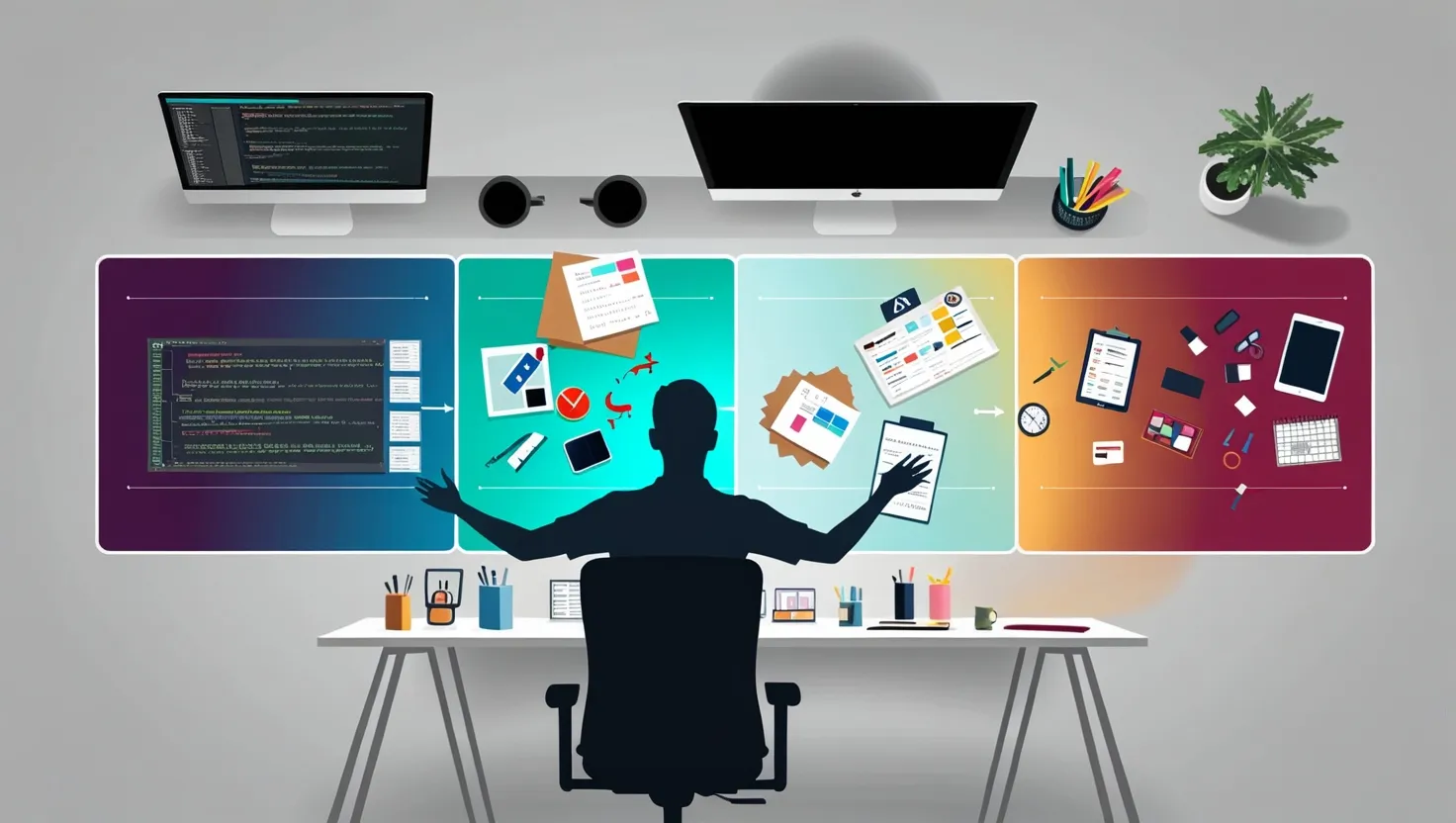Context switching is the silent productivity assassin lurking in our workdays. We’ve all been there - deep in the flow of writing code when a Slack notification pings, derailing our train of thought. Or finally making headway on that big strategy document when an “urgent” email demands immediate attention. Before we know it, we’re juggling a dozen half-finished tasks and wondering where the day went.
But here’s the thing - our brains aren’t built for constant context switching. Every time we shift our focus, there’s a cognitive cost. It’s like our mental gears have to grind and realign. Research shows it can take up to 23 minutes to fully regain our concentration after an interruption. Multiply that by the dozens of context switches we face daily, and it’s no wonder we often end our workdays feeling drained yet unaccomplished.
So how can we tame this productivity-sapping beast? I’ve spent years experimenting with different techniques, and I’ve distilled my findings into eight powerful strategies for mastering context switching. Let’s dive in.
First up is what I call the Context Reset Button. This simple yet effective technique involves taking a deliberate 90-second pause between tasks. Close those unrelated browser tabs, clear your physical workspace, and take three deep, centering breaths. It’s like hitting a reset button for your brain, creating a clean mental break between activities. This prevents the mental residue of your previous task from contaminating your next endeavor.
“The art of resting the mind and the power of dismissing from it all care and worry is probably one of the secrets of our great men.” - Captain J. A. Hatfield
Next, we have Task Batching by Mental Mode. The key here is to group activities that require similar thinking patterns. Schedule your analytical tasks together, creative work in separate blocks, and administrative duties in their own time slots. By minimizing the shifts between different mental frameworks, you reduce the cognitive toll of context switching.
Have you ever noticed how some days you feel “in the zone” for certain types of work, while other tasks feel like pulling teeth? How might intentionally structuring your day around these mental modes impact your productivity?
The Physical Anchor Technique leverages the power of association. Assign specific physical objects or positions to different work modes. Maybe you use a particular pen for creative writing, adjust your chair to a certain position for analytical tasks, or don special glasses for deep reading sessions. These physical anchors act as triggers, signaling to your brain that it’s time to shift into the appropriate mental state.
Transition Documentation is a game-changer for complex, ongoing projects. Before ending any task, take a moment to capture its current status, next actions, and key details in a standardized format. This eliminates the need to rebuild context when you return, saving valuable mental energy. Think of it as leaving yourself breadcrumbs to easily find your way back into the task.
Environment Shifting taps into the power of our surroundings to influence our mental state. Create distinct workspaces for different types of activities. Even small changes like facing a different direction or moving to another part of your desk can signal to your brain that a new mode of work is beginning. If you work from home, try designating specific areas for focused work, creative tasks, and administrative duties.
“The secret of getting ahead is getting started. The secret of getting started is breaking your complex overwhelming tasks into small manageable tasks, and then starting on the first one.” - Mark Twain
The Focus Countdown is a technique I use when transitioning to high-concentration work. It’s a simple 5-4-3-2-1 countdown where, with each number, you narrow your attention more completely to the upcoming task. This progressive focusing technique prepares your mind for deep work, almost like a mental warmup routine.
In our digital age, we can’t ignore the impact of our online environments. That’s where Digital Context Containers come in. Develop separate digital setups for different work categories. This might mean using different browser profiles, desktop arrangements, or sets of applications that open together for specific types of tasks. By eliminating digital setup time, you remove a major source of friction in context switching.
Finally, we have the Bookmark Method. This one’s a lifesaver when interruptions are truly unavoidable. When you’re pulled away from a task, create an immediate “mental bookmark” by quickly jotting down your exact thought in progress. This preserves your mental state and allows for much faster re-entry when you return to the task.
“Time is the most valuable coin in your life. You and you alone will determine how that coin will be spent. Be careful that you do not let other people spend it for you.” - Carl Sandburg
Now, you might be thinking - this all sounds great, but how do I actually implement these techniques in my hectic workday? Start small. Pick one or two strategies that resonate with you and commit to trying them for a week. Pay attention to how they impact your focus and productivity. Then, gradually incorporate more techniques as you build your context switching muscles.
Remember, the goal isn’t to eliminate all context switching - that’s neither realistic nor desirable in most modern work environments. Instead, we’re aiming to master the art of switching contexts efficiently, minimizing the cognitive drain and maximizing our productive output.
What’s your biggest context switching challenge? Is it constant notifications, unclear priorities, or something else entirely? Identifying your personal pain points is the first step in crafting a context switching strategy that works for you.
As you experiment with these techniques, you’ll likely discover that some work better for you than others. That’s perfectly normal - we all have different work styles and cognitive preferences. The key is to build a personalized toolkit of context switching strategies that you can deploy as needed throughout your workday.
One often overlooked aspect of mastering context switching is the importance of self-awareness. Start paying attention to your energy levels and focus throughout the day. When do you naturally feel most alert and productive? When do you tend to struggle with concentration? Use this information to structure your day, aligning your most demanding tasks with your peak mental hours.
“The successful warrior is the average man, with laser-like focus.” - Bruce Lee
It’s also crucial to communicate your context switching strategies with your team. If you’re implementing focused work blocks or using the Do Not Disturb feature, make sure your colleagues understand and respect these boundaries. This might involve setting expectations around response times or designating specific hours for collaborative work.
As you become more adept at managing context switches, you’ll likely notice some surprising benefits beyond increased productivity. Many people report reduced stress levels, improved job satisfaction, and even enhanced creativity when they gain better control over their attention.
So, are you ready to take control of your context switching and reclaim your productivity? Which of these techniques are you most excited to try? Remember, mastering context switching is a skill - it takes practice and patience. But the payoff in terms of increased focus, reduced stress, and amplified output is well worth the effort.
Let’s make context switching work for us, not against us. Your future, more productive self will thank you.






